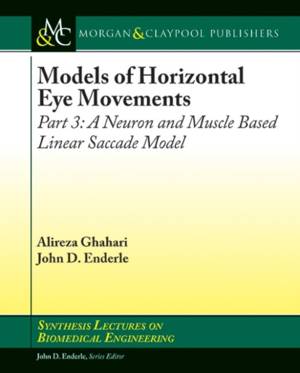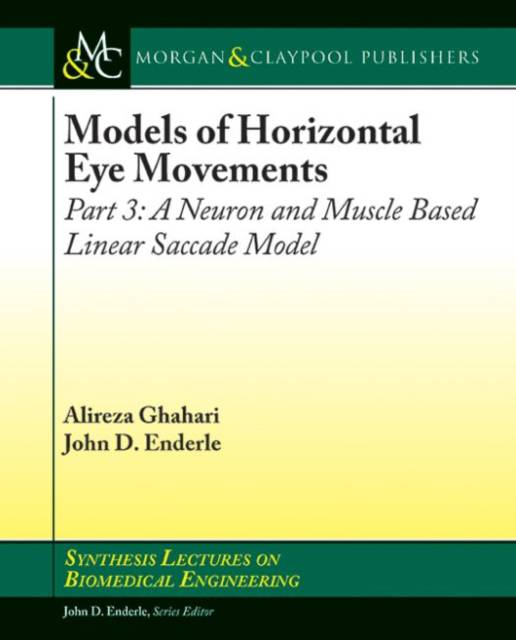
- Retrait gratuit dans votre magasin Club
- 7.000.000 titres dans notre catalogue
- Payer en toute sécurité
- Toujours un magasin près de chez vous
- Retrait gratuit dans votre magasin Club
- 7.000.0000 titres dans notre catalogue
- Payer en toute sécurité
- Toujours un magasin près de chez vous
Models of Horizontal Eye Movements
Part 3, a Neuron and Muscle Based Linear Saccade Model
Alireza Ghahari
83,95 €
+ 167 points
Format
Description
There are five different types of eye movements: saccades, smooth pursuit, vestibular ocular eye movements, optokinetic eye movements, and vergence eye movements. The purpose of this book series is focused primarily on mathematical models of the horizontal saccadic eye movement system and the smooth pursuit system, rather than on how visual information is processed. A saccade is a fast eye movement used to acquire a target by placing the image of the target on the fovea. Smooth pursuit is a slow eye movement used to track a target as it moves by keeping the target on the fovea. The vestibular ocular movement is used to keep the eyes on a target during brief head movements. The optokinetic eye movement is a combination of saccadic and slow eye movements that keeps a full-field image stable on the retina during sustained head rotation. Each of these movements is a conjugate eye movement, that is, movements of both eyes together driven by a common neural source. A vergence movement is a non-conjugate eye movement allowing the eyes to track targets as they come closer or farther away. In Part 1, early models of saccades and smooth pursuit are presented. A number of oculomotor plant models are described therein beginning with the Westheimer model published in 1954, and up through our 1995 model involving a 4th-order oculomotor plant model. In Part 2, a 2009 version of a state-of-the-art model is presented for horizontal saccades that is 3rd-order and linear, and controlled by a physiologically based time-optimal neural network. In this book, a multiscale model of the saccade system is presented, focusing on the neural network. Chapter 1 summarizes a whole muscle model of the oculomotor plant based on the 2009 3rd-order and linear, and controlled by a physiologically based time-optimal neural network. Chapter 2 presents a neural network model of biophysical neurons in the midbrain for controlling oculomotor muscles during horizontal human saccades. To investigate horizontal saccade dynamics, a neural circuitry, including omnipause neuron, premotor excitatory and inhibitory burst neurons, long lead burst neuron, tonic neuron, interneuron, abducens nucleus, and oculomotor nucleus, is developed. A generic neuron model serves as the basis to match the characteristics of each type of neuron in the neural network. We wish to express our thanks to William Pruehsner for drawing many of the illustrations in this book.
Spécifications
Parties prenantes
- Auteur(s) :
- Editeur:
Contenu
- Nombre de pages :
- 158
- Langue:
- Anglais
- Collection :
Caractéristiques
- EAN:
- 9781627055468
- Date de parution :
- 01-10-14
- Format:
- Livre broché
- Format numérique:
- Trade paperback (VS)
- Dimensions :
- 190 mm x 235 mm
- Poids :
- 285 g

Les avis
Nous publions uniquement les avis qui respectent les conditions requises. Consultez nos conditions pour les avis.






